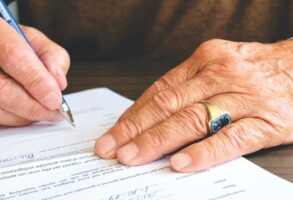
Published September 19, 2016
Miller Center: First Year Project
Below is an article by EPPC Senior Fellow Peter Wehner for the University of Virginia’s Miller Center. Done in the form of a memorandum to the next president, it offers a way to think about, and the elements that might comprise, an Opportunity Agenda. Our politics these days is largely devoid of a serious discussion of policies, including ones that would promote opportunity and upward mobility. The Miller Center (@Miller_Center), through its First Year Project, on whose advisory council Mr. Wehner serves, is offering a corrective. This is his contribution to that effort.
TO: The President-Elect
FROM: Peter Wehner
SUBJECT: Opportunity Agenda/Your First Year
DATE: November 9, 2016
As you think about your first year in office, there will be many issues competing for your time and attention. I would urge you to focus as much of your energy and political capital as possible on constructing an opportunity agenda, by which I mean an agenda that allows people to rise in life based on merit, talent, and hard work; that doesn’t guarantee success but does ensure the system isn’t rigged and everyone has a fair chance to succeed; and that allows people to increase their living standards and flourish regardless of the circumstances of their birth.
The need is urgent, the time and political circumstances are right, and the nation is longing for uplift, for a positive agenda, for a way forward. You can provide it.
Historical context
In laying out the case for an opportunity agenda, it might be best to begin at the beginning. The concept of an opportunity society, the chance to pursue the American dream, is fundamental to America’s self-conception and has deep roots in American history.
America has always been a beacon for people looking for a fresh start, and has always offered to those who do not begin the race of life with an advantage the hope that they can nonetheless succeed and prosper. The animating ideals of our founding documents include the proposition that we are all created equal and endowed by our Creator with “certain unalienable Rights, that among these are Life, Liberty and the pursuit of Happiness.” The greatest interpreter of the founders, Abraham Lincoln, spoke about a government “whose leading object is to elevate the condition of men—to lift artificial weights from all shoulders, to clear the paths of laudable pursuit for all, to afford all an unfettered start and a fair chance, in the race of life.” So this idea of opportunity is one that has deep resonance with the American people; it is like a thread running through our history.
Where things stand
For a variety of complicated reasons, we have badly fallen short of this “leading object” of government in our time. Some of the reasons have to do with structural economic changes (e.g., globalization and advances in technology), community dysfunction, and family instability. Some have to do with the failure to modernize our institutions to adapt to contemporary challenges. And some have to do with misguided policies and missed opportunities by both parties.
Whatever the precise explanations and apportionment of blame, here’s what we know: many European countries now have as much social mobility as, and more opportunity than, the United States. Today, a child’s future depends on parental income more in America than it does in Canada and parts of Europe.
Middle-class Americans have been working harder and longer hours, yet their wages are stagnant. (The median family income, adjusted for inflation, was lower in 2013 than it was in 1989, and in 80 percent of the counties in America, the median income is lower today than it was 15 years ago.) Ordinary Americans have experienced a rise in the cost of living, particularly in the areas of health care (which has doubled in constant dollars since 1988) and college tuition (which has tripled over the last three decades). In sum: the middle class in America has been losing ground for a generation.
Younger workers are finding it more difficult to launch than ever. For example, in 2014 more than a third of Americans between the ages of 18 and 31 were living in their parent’s home.
As for the poor, according to recent data, 14 million people live in extremely poor neighborhoods, 5 million more than before the downturn and more than twice as many as in 2000. Of those residents, 6.3 million were poor. “Put differently,” according to one study, “13.5 percent of the nation’s poor population faced the double burden of being poor in a very poor place”—an increase from the last decade. “If you are born poor [in America],” note Isabel Sawhill and Ron Haskins of the Brookings Institution, “you are likely to stay that way.”
Why a first-year priority?
There is clearly a cognitive dissonance between where we are and how we like to think of ourselves—as the land of opportunity. We are falling well short of our aspirations. As a result, Americans are feeling frustrated and uneasy, insecure and pessimistic. Only about a quarter of the American people believe the country is on the right track. Two-thirds of Americans believe it is harder for them to reach the American dream than it was for their parents.
These perceptions are grounded in certain realities—income inequality rising, social mobility stalled, and poverty entrenched. These difficulties require a national response, and there is a moral imperative to offer one.
There is also a political opening for you to act—both because new presidents are usually given a great deal of deference to enact their agenda and because Americans, after the bitter and brutal campaign of 2016, will be thirsting for the chief executive to govern in a serious way that will address pressing problems. Indeed, the fact that there is something of an “opportunity crisis” in America helps explain the widespread distemper we see among Americans and which clearly bled into the campaign.
As you think about how to approach this issue, take note of what the late Andrew Kohut of the Pew Research Center said: “What the public wants is not a war on the rich, but more policies that promote opportunity.”
The elements of an opportunity agenda
When thinking about an opportunity agenda, the place to start is with economic growth. After a 40-year period of high growth—averaging 3.5 percent per year from 1960 to 2000—we have seen a rapid deceleration. During your predecessor’s two terms, there was not a single year of 3 percent GDP growth. Tepid growth is the enemy of an opportunity society.
Getting us on the right track requires several things, beginning with remaking a tax code that impedes growth by penalizing investment and innovation and encouraging cronyism. We need to broaden the base, flatten and lower the rates, clean out and get rid of many existing deductions—excluding mortgage interest and charitable giving—and lift burdens off middle-class families. (I know you have legitimate concerns about the deficit and debt, which is why this approach—broadening the base and getting rid of some existing deductions—can help offset the revenue loss from lower and flatter rates.)
Immigration has always been part of the American recipe for growth, but can only remain so with serious reforms. We need rethink our definition of family reunification, which is currently too expansive, and to emphasize visas for the high-skill workers our economy requires. We should model our approach after Canada and Australia, whose immigration policies advance their economic interests. David Brooks of the New York Timesexplains how we should approach the issue: “The immigration system should turn into a talent recruiting system, a relentless effort to get the world’s most gifted and driven people to move to our shores.”
We’re experiencing what Walter Russell Mead calls “the energy revolution of the 21st century,” which he argues has the capacity to be a genuine game changer based on new discoveries and new technologies (hydraulic fracturing and other extraction technology). “The United States is better supplied with fossil fuels than any other country on earth,” according to Mead. “Canada and the United States are each richer in oil than Iraq, Iran, and Saudi Arabia combined.”
This energy revolution has the potential to be a jobs revolution, including substantial growth in high-income jobs for blue-collar workers. Alongside investments in alternative energy sources, you need to pursue policies to keep this “energy revolution” going—including lifting the ban on American crude-oil exports, allowing more fossil-fuel exploration on federal lands, and encouraging investment in our oil and gas transportation infrastructure.
The kind of economic growth that reforms like these could encourage is an essential prerequisite for a revival of opportunity in America. But it is only a beginning. To help those most in need benefit from growth, much more is required.
Education must lay at the heart of a renewed opportunity agenda. Too few of our students are being well served by our current education system, but students from poor families are suffering by far the most. So the members of our society most in need of a good education are stuck in the worst-run and most dysfunctional schools and denied any promising alternatives.
Some combination of public-school reform and private-school choice will be essential to ending the intergenerational cycle of poverty and failure. We need to permit more choice and variety, greater accountability and merit pay, more choice in school curricula, greater transparency, and expanded online learning opportunities and home schooling. We need to reform teacher preparation programs, empower principals, and do away with the policy of “last in, first out.”
Chester E. Finn Jr. and Michael Brickman argue for further innovations, such as choices among individual school courses and course providers, tax-sheltered scholarship programs to cover private-school tuitions, and even debit card–style savings accounts that parents can tap for their children’s education. K-12 education is not primarily a federal responsibility, but the federal government can help lift obstacles to such reforms, and this must be a high priority.
The federal government has a greater role in higher education, especially given its role in helping millions finance their tuition. A college degree remains a crucial ticket to the middle class. Yet the higher education system is fundamentally broken—outmoded, far too expensive, and much too difficult to access.
The goal needs to be to subject the higher education system to the kinds of consumer pressures that would compel it to offer better choices at lower costs. What does that mean concretely? Along with investments in skills training and alternatives to college, in higher education we need more flexibility in accreditation to let more players into the field; more data about outcomes to enable consumers to make better informed choices; and reforms of the student loan system, to restrain the inflationary pressure that drives costs up and allows failures to survive. Rather than thinking about the federal government as a big bank that funds ever-higher tuition costs, we should think about it as an enabler of dynamism and constructive competition.
When it comes to helping less-skilled Americans who are finding it difficult to find meaningful work and raise a family, Michael Strain of the American Enterprise Institute makes a persuasive case for four proposals:
- Expand earning subsidies (like the Earned Income Tax Credit, including to childless workers) as a way to increase the rewards to work, increase the workforce participation rate, and reduce poverty
- Dramatically expand child tax credits to help working families offset the burdens of paying (through taxes) for entitlement programs for the elderly by allowing them to keep more of what they earn
- Provide relocation subsidies to the long-term unemployed that will finance some significant part of the costs of moving to a part of the country with a better labor market
- Cut the profoundly regressive payroll taxes and gradually fund more old-age entitlement programs from general revenue in order to shift resources from the elderly to younger workers
The eligibility rules for a number of our key public-assistance programs, especially Medicaid but also the Earned Income Tax Credit, are designed in ways that discourage higher-paying work, since benefits diminish or disappear abruptly as income rises. They therefore discourage investments in the kind of self-improvement often necessary to obtain such work. These and other social programs must be structured to encourage recipients to make more productive use of their talents.
Scott Winship of the Manhattan Institute recommends ways to extend the lessons of the 1990s welfare reform to the rest of the federal safety net by block-granting means-tested programs and sending them to the states, thereby encouraging independence, experimentation, and flexibility while requiring work and time limits for most—but not all—beneficiaries.
“Poverty produces family instability,” sociologist Robert Putnam has written, “and family instability in turn produces poverty.” Estimates show that if America had the same percentage of single parents today as we did in 1970, the child poverty rate would be 30 percent less. Encouraging family formation and marital permanence is something government has a very poor record in doing. Many things have been tried; few have succeeded. But there are some steps worth taking.
At a bare minimum, we should remove marriage penalties in the tax code and disincentives to marry in welfare programs. It doesn’t make sense to encourage behavior that is harmful to society and children. To narrow the “growing marriage divide” between less-educated and better-educated Americans, scholars W. Bradford Wilcox, Nicholas H. Wolfinger, and Charles E. Stokes encourage experimenting with a range of public and private strategies. They claim that some relationship education programs—for example, the Oklahoma Marriage Initiative and Supporting Father Involvement—have improved the quality and stability of low-income parents’ relationships and the emotional welfare of children whose parents have participated in them.
Local civic initiatives designed to strengthen family life already exist, such as First Things First in Chattanooga, TN, a promising local civic initiative that provides education on marriage, fatherhood, and parenting. “Programs like this need to be scrutinized and, if they prove to be effective, replicated across the country,” according to Wilcox, Wolfinger, and Stokes.
The same can be said about programs such as the Nurse-Family Partnership, in which nurses visit first-time, low-income mothers to provide information on nutrition and parenting as a way to increase school readiness of at-risk kids.
There are other areas to look at, including criminal justice reform, encouraging financial literacy and mentoring to low-income families, improving infant and child health, and supporting public service campaigns to discourage teen pregnancy and encourage what’s been called the “success sequence,” meaning young adults are encouraged to pursue education, work, marriage, and parenthood in that order. An agenda geared to enabling growth, improving education, and strengthening our safety-net programs would be a strong start on the path to greater opportunity.
Concluding thoughts
The United States is an exceptional nation, but you will soon become president of a country in which too many citizens are facing hardships and struggles. More than 45 million Americans live below the poverty line. For many others, the American dream seems out of their reach. They believe our politics is broken, opportunities are elusive, and the playing field isn’t fair.
Your presidency should be about rebuilding America through economic growth and widespread prosperity; to help us once again become a thriving, dynamic, forward-looking nation; and to reform and modernize government at every level to help Americans create a better life for themselves and their children.
You should stand for the politics of the common good—and an agenda, like the one sketched out above, that is economically inclusive and morally compelling; that helps workers, families, and those who are struggling; and that smashes down barriers to social mobility.
In advancing this agenda, keep several things in mind. First, the federal government’s role isn’t to ensure success; it is to give people a fair shot at success. Second, approach your task with energy but also some degree of modesty in terms of what the federal government—and your administration—can achieve.
There is a great deal we still do not know and need to learn. So my last bit of counsel to you is to always be open to experimentation, to reexamine your assumptions and test your theories against reality, and to be ruthlessly empirical in your approach. Learn as you go.
John F. Kennedy, after defeating Richard Nixon in 1960, said, “The margin is narrow, but the responsibility is clear.” So is yours. I wish you every success.
Peter Wehner is a senior fellow at the Ethics and Public Policy Center. He writes widely on political, cultural, religious, and national security issues. In 2015 he was named a contributing opinion writer for the New York Times. Wehner served in the Reagan and George H. W. Bush administrations prior to becoming deputy director of speechwriting for President George W. Bush. In 2002, he was asked to head the Office of Strategic Initiatives, where he generated policy ideas, reached out to public intellectuals, published op-eds and essays, and provided counsel on a range of domestic and international issues. He was also a senior advisor to the Romney-Ryan 2012 presidential campaign.





